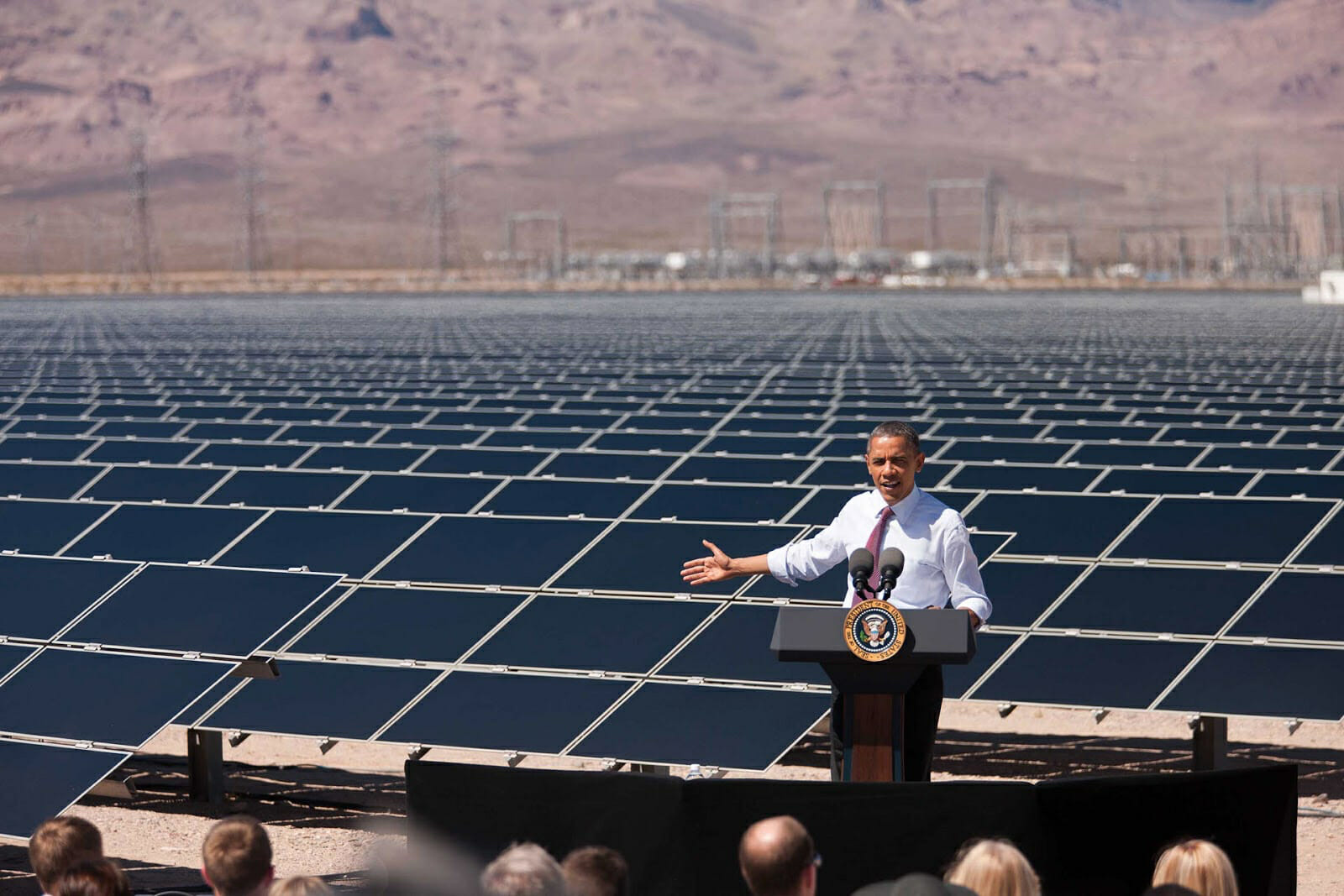
Telling the Story of American Solar
The American solar PV installation industry has cause to begin the year with gusto as firms continue to enjoy cheap panel supplies from abroad and develop new leasing and third party ownership models that expand their potential customer base dramatically. The third quarter 2012 was its third largest on record for installers and the residential market enjoyed its best quarter ever. Barack Obama used his second inaugural address and his fifth State of the Union address to beatify the cause of climate change reform, encouraging solar advocates soliciting federal support.
Just last week, General Motors announced a partnership with the Solar Energy Industries Association, an alliance with global implications. “We negotiate rates with entire countries around the world,” said GM renewable energy manager Rob Threlkeld. “We plan to have a significant impact on driving the rates for solar electricity to a place where they are competitive with fossil fuels for electricity.”
U.S. solar installers still face high barriers, however, to their goal of attaining parity in the residential and commercial electricity markets alongside coal, natural gas, and nuclear. To maintain their growth, installers of distributed and utility-grade solar must boldly explore new, emerging markets nationwide. Indeed, small solar installers must find brand-new customers to survive. Most residential and commercial consumers of PV systems will buy or lease a system and then rest comfortably on their decisions thanks to a 20 or 25-year warranty. Due to the durability of solar installations, repeat customers are rare and referrals are paramount to the business.
To achieve long-term, sustainable growth, solar installers and manufacturers must develop a strong, faithful brand name among the American public. They should spread their success stories in the media—presenting their enterprises as dependable, professional members of the electric power community.
The Solyndra bankruptcy story has contaminated public perception of the solar industry’s motives and methods. Solar advocates must dislodge this storyline or risk losing their customer base to fossil fuels. Many Americans view renewable technology of all kinds as too costly, unreliable, and complex to be trusted. Last year, Bill Clinton observed this marketing problem at Solar Power International in Orlando, Florida. He offered a word of caution to a room full of solar fanatics. “You have to tell your story. You have to tell it far and wide. You can’t just expect people to get it. You have a good story. Tell it,” said Clinton.
The solar industry can certainly begin by telling a tale of job creation, focusing on it installation side—which is impossible to outsource. In November 2012, the U.S. solar industry employed over 110,000 people while providing just 0.5% of the national power supply. It has plenty of room to grow. CleanEdison Inc. recently released a report projecting that 36,000 technical workers would be employed by the solar industry in 2020—a 24 percent increase since 2010. But the solar industry will need more than economic statistics to frame the contours of a winning story and shake the status quo on national energy policy.
Fortunately, the solar industry’s history features grand narratives, such as the use of solar energy for space exploration. This storyline, narrated by the industry to consumers, could secure photovoltaic technology in the public consciousness as a credible, enduring power base. Solar has seen practical space applications in America as early as 1958, when the Vanguard I satellite was launched with a solar-powered radio onboard. Today, the International Space Station—one of the great technological feats of human history and a symbol of global comity—depends on solar power. This space-solar model, moreover, has inspired others. A former NASA engineer has begun designing a solar power satellite to channel electricity back to Earth for residential and commercial use.
The U.S. solar installation industry also sports a unique corporate culture—one ripe for storytelling in the mass media. The popular image of a solar executive conveys a youthful, brash personality. Many industry leaders also believe their firms are on a crusade much nobler than profit-seeking; they aim to save the planet. Some solar firms want to implement corporate reforms as they market a vision for a clean energy future. A solar installer in Colorado called Namasté Solar prides itself on a youthful, idealist corporate culture. The chief executive officer has no private office. “Each one of our employees has the opportunity to become a co-owner of the company and purchase stock,” explained 37-year-old CEO Blake Jones. “They can invest as much as they want in the company and get a proportional return.”
Elon Musk, the 41-year-old co-founder of SolarCity—one of the country’s leading solar installers—claims news headlines for his driven entrepreneurship in the solar industry as well as other business ventures selling private space exploration and electric vehicles. After a December IPO, his solar company’s shares have enjoyed a 100% rise on the Nasdaq; SolarCity has a valuation of $1.2 billion. Meanwhile, Musk’s technical genius and outsized persona has evoked comparisons to Robert Downey Jr.’s portrayal of Tony Stark in the 2008 Marvel blockbuster film Iron Man, as well as to Apple founder Steve Jobs.
First Solar, one of the most successful solar manufacturers and builders in the U.S., with 5 gigawatts of solar installed already, incorporates environmental stewardship into every aspect of the company. According to its mission statement, it “provides superior environmental benefits while ensuring the health and safety of our associates, customers, and the communities in which we operate.” To secure this environmental mission, First Solar makes a targeted human resources pitch: “we are always seeking motivated and talented individuals who are committed to making a difference by enabling a world powered by clean, affordable solar electricity.” The solar industry should nurture their unique corporate culture, especially at startups. Executives should build a team unified by idealism and environmental ethics as much as by market forces. Once the solar companies are big enough to hire marketing and communications departments, this culture will distinguish their marketing campaigns.
The Wall Street Journal recently interviewed several successful startup advisers about how to cultivate a distinct tenor at a new company—especially in the high-tech sector. “When hiring,” said angel investor Joanne Wilson, “particularly, at the beginning, it is important to find people who are drinking the same Kool-Aid and are going to be part of creating the cultural vibe that ends up bleeding into the brand.” Indeed, the tension between profit-hungry, energy agnostic managers and hardened green advocates can break a solar company apart.
Angela Benton, founder and CEO of NewME Accelerator, added: “When working on a startup, culture is often the last thing that entrepreneurs think about. They tend to see it as insignificant or something they can put off until later. That’s wrong.” A new media campaign highlighting solar success stories, shaped by the unique, quirky corporate culture of its best firms, can help the U.S. solar industry become a mainstream electrical source nationwide.
The giants of the solar industry have overcome barriers inherent to their trade—intermittency of its source, grid integration problems, and the unpredictability of federal, state, and local incentives. Decades ago, the oil industry interwove their origin story with the American Dream—spreading “black gold” folklore from boomtowns to every corner of the country. With concerted, creative effort, the American solar industry can tell a story just as glorious.

